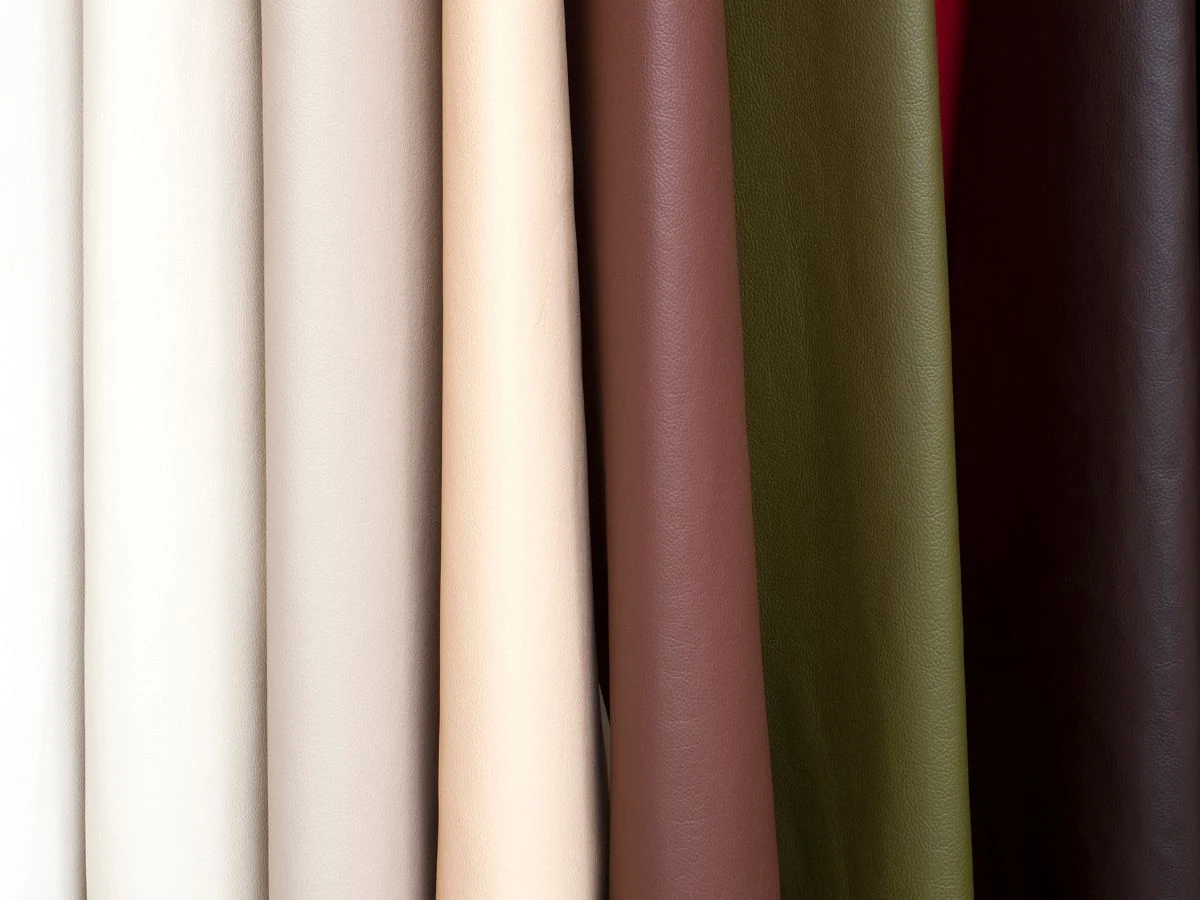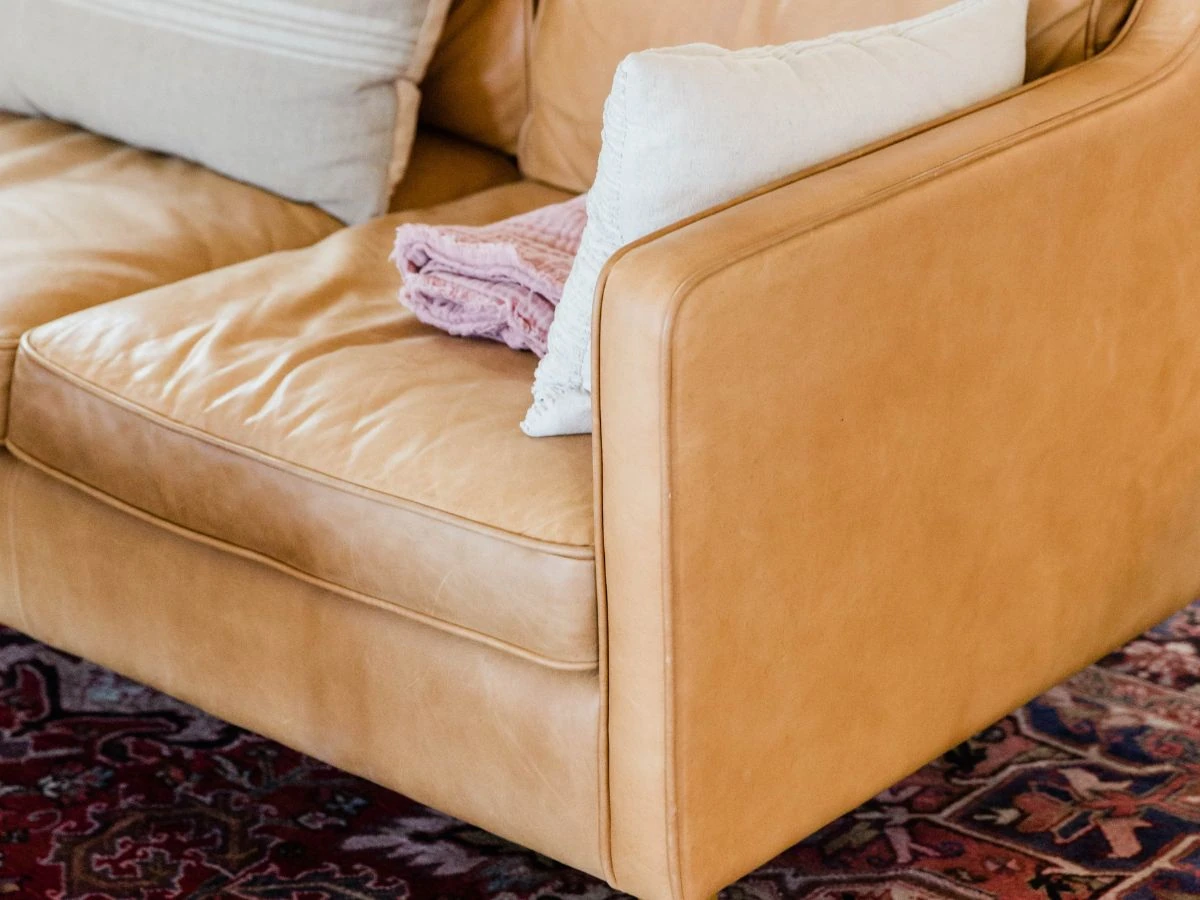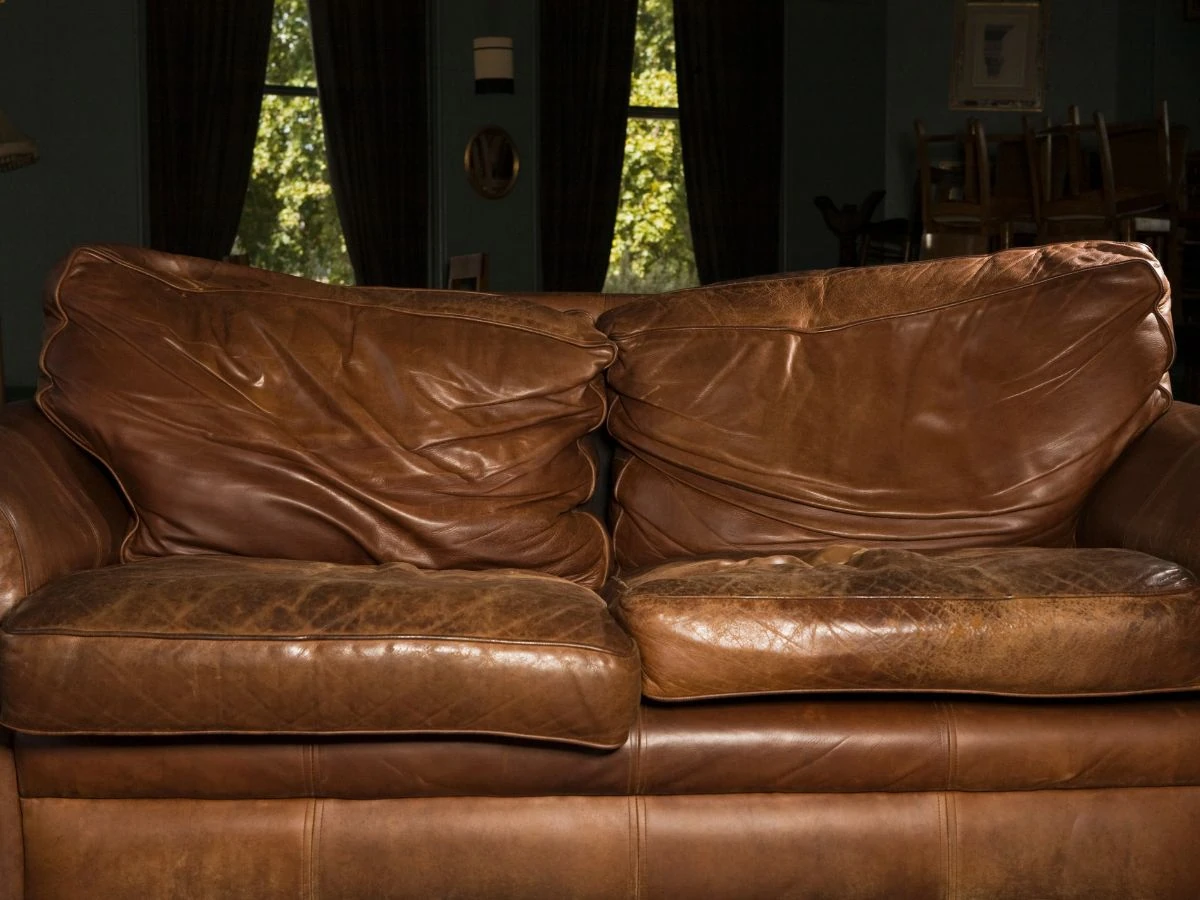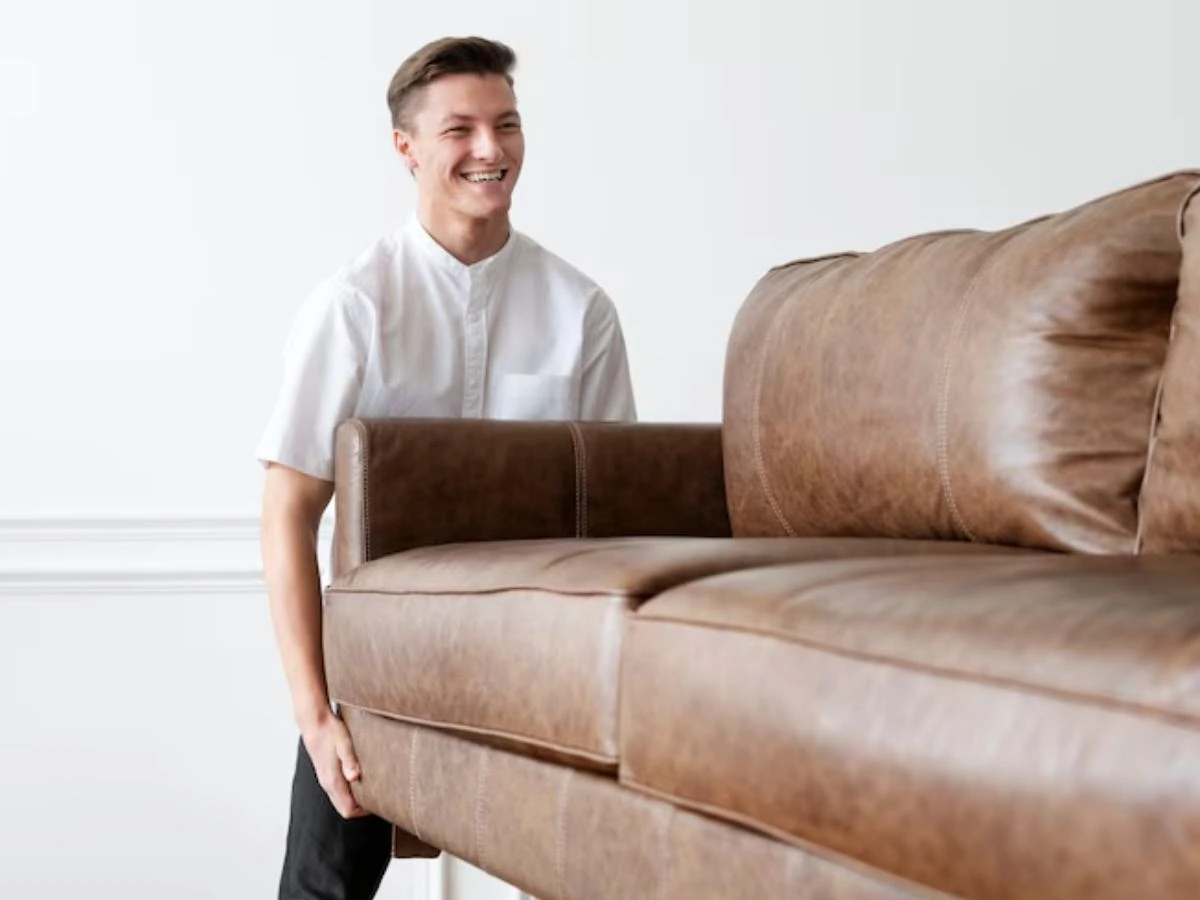Leather furniture represents a significant investment in your home’s comfort and style. With it’s luxurious feel and timeless appeal, quality leather pieces can last for decades, but only with proper care and maintenance. Over time, even the finest leather sofa or armchair can begin to show signs of wear, developing a faded, tired appearance that detracts from its beauty.
The good news? You don’t need to replace your beloved leather furniture when it starts looking worn. With the right techniques and products, you can restore faded leather to its former glory, saving hundreds or even thousands of pounds in replacement costs.
This comprehensive guide walks you through the process of breathing new life into tired leather furniture, from initial cleaning to final protection. By following these steps, you’ll transform your faded, worn leather pieces into stunning focal points that look nearly new again.
Introduction to Leather Restoration
Leather restoration is the art of reviving and rejuvenating worn, faded, or damaged leather items, such as leather sofas, leather car seats, and leather jackets. The goal is to restore the original colour, texture, and appearance of the leather, making it look new again. This can be achieved through various leather restoration products, such as leather colour restorers, leather conditioners, and leather protection creams.
Leather restoration is a cost-effective alternative to replacing worn or damaged leather items. With the right products and techniques, anyone can restore their leather furniture, accessories, or car interiors to their original condition. Whether you’re looking to restore a worn leather sofa, a faded leather jacket, or a damaged leather car seat, leather restoration is the perfect solution.
In addition to restoring the appearance of the leather, leather restoration can also help prevent cracking and wear. A leather conditioner can moisturize and soften the leather, making it less prone to cracking and wear. Regular cleaning and maintenance can also help prevent stains and spills, keeping the leather looking its best.

Understanding Leather Furniture and Why It Fades
Before diving into restoration techniques, it’s important to understand what you’re working with and why leather furniture fades over time.
Types of Leather Used in Furniture
Not all leather is created equal, and the type of leather will impact both how it ages and how you should approach restoration:
Full-grain leather is the highest quality, showing natural markings and developing a beautiful patina over time. It’s more resistant to wear but can still fade with exposure to sunlight. Absorbent leather can be treated with specific products designed to restore its color and integrity.
Top-grain leather has been sanded to remove imperfections, making it thinner but more stain-resistant than full-grain. It typically requires more frequent conditioning.
Bonded leather consists of leather scraps bound together with adhesives. It’s more prone to peeling and cracking and may be more challenging to restore. Non absorbent leathers require different restoration techniques and products.
Faux leather (vinyl or polyurethane) isn’t actually leather at all but can be restored using specific techniques designed for synthetic materials.

Common Causes of Leather Fading and Damage
Understanding what causes leather to fade helps prevent future damage:
Sunlight exposure is leather’s biggest enemy. UV rays break down leather fibres and fade colour dramatically over time.
Heat sources like radiators or fireplaces can dry out leather, causing it to crack and lose colour. Cracked leather can result from drying out due to heat exposure and requires conditioning to prevent further damage.
Body oils and sweat transfer to leather surfaces with regular use, breaking down the finish.
Improper cleaning products containing harsh chemicals can strip leather of its natural oils and colour.
Neglect leads to leather drying out, which accelerates wear and fading.
Signs Your Leather Furniture Needs Restoration
Look for these indicators that it’s time to restore your leather furniture:
- Colour has faded or become uneven
- Surface feels dry or rough to the touch
- Visible cracking or peeling
- Slight cracking
- Leather has lost its suppleness
- Stains or discolouration that won’t clean away with normal methods
Essential Supplies for Leather Restoration
Gathering the right supplies before you begin ensures a smooth restoration process:
Cleaning Products
- Leather-specific cleaner (avoid household cleaners)
- Distilled water
- Clean, soft cloths or sponges
- Clean lint free cloth
- Soft bristle brush for textured leather
Repair Supplies
- Leather filler for cracks and tears
- Fine-grit sandpaper (600-1200 grit)
- Leather repair kit for more significant damage and minor scuffs
- Cotton swabs for precise application
Colouring and Finishing Products
- Leather dye or pigment in matching colour
- Leather preparer/deglazer for removing old finish
- Applicator sponges or cloths
- Small artist brushes for detail work
- Leather finisher/sealer
Conditioning Products
- Leather conditioner or moisturiser
- Leather protectant with UV protection
- Leather balm for ongoing care
After applying a leather conditioner, it’s crucial to wipe off any excess conditioner to prevent buildup and maintain the leather’s condition.
Quality matters when selecting these products, investing in proper leather-specific supplies will yield far better results than attempting to use substitutes.

Restoring Colour to Faded Leather
This stage transforms the appearance of your furniture, bringing back rich, vibrant colour.
Choosing the Right Colorant
Leather dye penetrates leather fibres and works best on absorbent, natural leathers. Absorbent leather items require particular care and attention to address fading and damage.
Leather pigment sits on the surface and works well for most furniture leathers, especially those with a protective coating.
For most home restoration projects, leather pigment offers more forgiving application and better coverage of imperfections. However, achieving professional-quality results often requires the expertise and specialized equipment found in professional leather recolouring services.
Colour Matching Techniques
- If using a pre-mixed colour, test on an inconspicuous area first.
- For custom colours, mix small amounts at a time and record your formula.
- Remember that colour appears darker when wet and lightens as it dries.
- Compare against your furniture in natural light for accurate matching.
Application Process
- Ensure leather is completely clean and dry.
- Apply leather preparer/deglazer to remove any remaining finish and oils.
- Use a sponge applicator for large areas and small brushes for details.
- Apply colour in thin, even coats using a dabbing motion rather than brushing or wiping.
- Allow each coat to dry completely before applying the next (typically 30-60 minutes).
- Most projects require 2-3 coats for even coverage. Further applications can be made to enhance or darken the final colour result.
Creating a Natural Look
- Blend colours at edges for a seamless transition.
- For two-tone or antique effects, apply darker shades in creases and along edges.
- If your furniture has a natural patina you wish to preserve, consider applying colour selectively rather than covering the entire piece.
Remember that patience is crucial during this step, rushing can result in streaks or uneven colour.

Conditioning and Protecting Restored Leather
After recolouring, proper conditioning and protection ensure your restoration lasts.
The Importance of Conditioning
Conditioning replaces natural oils in the leather that are lost over time, preventing drying and cracking while enhancing the suppleness and sheen of your furniture.
Applying Conditioner Correctly
- Choose a conditioner formulated for your specific leather type.
- Apply a small amount to a clean lint free cloth, never directly to the leather.
- Work into the leather using gentle circular motions.
- Pay extra attention to high-use areas and any parts that still feel dry.
- Allow conditioner to absorb for the time recommended on the product (typically 1-4 hours).
- Buff gently with a clean, dry cloth to remove excess.
Sealing and Protecting
- Once conditioning is complete and the leather has fully absorbed the conditioner, apply a leather protectant. Using a leather protectant helps keep the leather soft and supple.
- Look for products with UV protection to prevent future fading.
- Apply protectant in thin, even coats with a clean cloth.
- Allow to dry completely between coats.
- For high-use furniture, consider applying multiple protective coats.
Creating a Maintenance Schedule
To keep your restored furniture looking its best:
- Dust weekly with a soft, dry cloth
- Clean with leather cleaner monthly
- Apply conditioner every 3-6 months
- Reapply protectant twice yearly
- Keep furniture out of direct sunlight and away from heat sources
Common Mistakes to Avoid When Restoring Leather
Even experienced DIYers can fall prey to these common pitfalls:
Using Incorrect Products
Household cleaners, baby wipes, and multi-purpose cleaners often contain chemicals that damage leather. Always use products specifically formulated for leather care. It is crucial to properly clean the leather before applying any restoration products to ensure optimal results in restoring the leather’s appearance and durability.
Over-Saturating the Leather
Using too much product can lead to staining, uneven colour, or prolonged drying times that may encourage mould growth in leather’s inner layers. After applying leather conditioner, it’s crucial to wipe off any excess conditioner to prevent buildup and maintain the leather’s condition.
Rushing the Process
Each step requires adequate drying or curing time. Rushing leads to poor adhesion, uneven colour, and potential damage to repairs.
Improper Drying Techniques
Using heat sources to speed drying can cause leather to shrink, crack, or become brittle. Always allow leather to dry naturally at room temperature.
Skipping the Preparation Steps
Proper cleaning and preparation create the foundation for successful restoration. Without thorough prep, even the best products won’t adhere properly or last long.

Professional vs. DIY Leather Restoration
How do you decide whether to tackle restoration yourself or call in the experts?
When to DIY
DIY restoration makes sense when:
- The damage is primarily cosmetic (fading, minor scratches, dryness)
- You’re comfortable following detailed instructions
- The furniture isn’t a valuable antique
- You have time to work through each step properly
- The cost of replacement would be moderate to high
- The item is made of old leather that shows mild to moderate wear
When to Call a Professional
Consider professional help when:
- The leather has severe damage (major tears, extensive cracking)
- The furniture is a valuable or antique piece
- The leather needs structural repairs
- You need an exact colour match on an unusual shade
- You lack the time or confidence for a complex restoration
Even seemingly straightforward DIY projects can encounter unexpected complications. The hidden dangers of DIY restoration often don’t become apparent until after the work is completed, when problems like colour bleeding, cracking, or adhesion failures emerge weeks or months later.
Results Comparison
The quality difference between professional and amateur work becomes evident in both immediate results and long-term durability. A detailed comparison of professional leather cleaning vs DIY methods reveals significant differences in technique, materials, and outcomes that impact both appearance and longevity.
Professional results typically offer:
- Perfect colour matching
- Invisible repairs
- Long-lasting finish
- Warranty on work
DIY results can be excellent but often show:
- Slightly visible repairs upon close inspection
- Potential colour variation
- Generally good but not showroom-perfect results
Conclusion: Bringing Your Leather Furniture Back to Life
Restoring leather furniture yourself is a rewarding project that saves money while extending the life of your cherished pieces. By understanding the type of leather you’re working with, using the right products, and following the proper steps, you can transform faded, worn leather into beautifully refreshed furniture.
Proper maintenance and specific restoration kits can bring old leather back to life, making it look fresh and vibrant again. Remember that patience is key throughout the process, rushing any step can compromise your results. With proper care following restoration, your leather furniture can continue to provide comfort and style for many years to come.
Whether you choose the DIY route or professional assistance, taking action to restore your leather furniture is always preferable to letting it deteriorate further. Your future self (and anyone who sits on your beautifully restored sofa) will thank you.
When your leather furniture needs more than you can handle, or if you want professional-level results without the learning curve, turn to the experts. Don’t let your beautiful leather pieces fade into the background, contact LeatherXpert today for a free, no-obligation quote and breathe new life into your home’s most comfortable investments.
